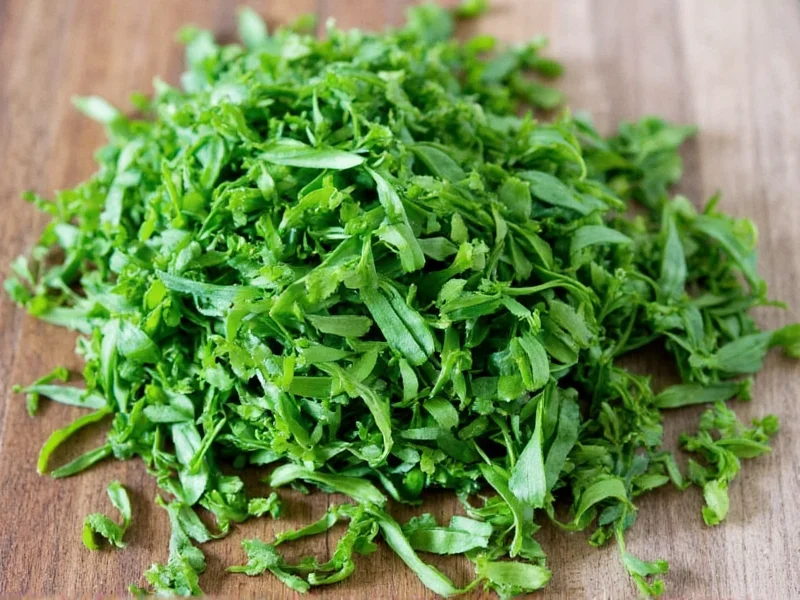Understanding herb conversions prevents ruined recipes and wasted ingredients. Many home cooks mistakenly use equal amounts of fresh and dried herbs, resulting in dishes that are either bland or overwhelmingly herbal. The difference stems from moisture content—fresh herbs are about 85% water, while dried herbs have concentrated essential oils and flavors.
Why Fresh and Dried Herbs Aren't Interchangeable
Fresh herbs contain significant moisture that evaporates during the drying process. This concentration means dried herbs deliver more intense flavor in smaller quantities. Consider these key factors:
- Moisture loss: Drying removes 70-85% of an herb's water content
- Oil concentration: Essential oils become more potent as water evaporates
- Leaf density: Delicate herbs like basil concentrate differently than woody stems like rosemary
- Storage time: Dried herbs lose potency over time, affecting conversion accuracy
Complete Fresh to Dried Herb Conversion Chart
| Common Herb | Fresh Measurement | Dried Measurement | Special Notes |
|---|---|---|---|
| Basil | 3 tsp (1 tbsp) | 1 tsp | Use half for older dried basil |
| Parsley | 3 tsp (1 tbsp) | 1 tsp | Fragile when dried—handle gently |
| Rosemary | 1.5 tsp | 0.5 tsp | Woody stems concentrate more intensely |
| Thyme | 2.5 tsp | 1 tsp | Leaves detach easily from stems |
| Oregano | 3 tsp (1 tbsp) | 1 tsp | Dried has stronger flavor than fresh |
| Dill | 4 tsp | 1 tsp | Fragile—use less dried than standard ratio |
| Mint | 3.5 tsp | 1 tsp | Fresh mint is milder than dried |
| Cilantro | 4 tsp | 1 tsp | Dried cilantro loses distinctive flavor |
Factors That Affect Herb Conversion Accuracy
Several variables influence the precise fresh herbs to dry conversion ratio for your specific situation:
Herb Density and Structure
Delicate herbs like cilantro and dill require more fresh volume compared to the standard 3:1 ratio because they lose significant volume during drying. Woody herbs like rosemary and thyme concentrate more intensely, needing less dried product.
Drying Method Matters
The way herbs are dried affects potency:
- Air-dried herbs typically retain 80-90% of flavor compounds
- Dehydrator-dried herbs maintain 70-85% potency
- Oven-dried herbs often lose 30-40% of essential oils
- Commercially dried herbs vary widely based on processing methods
Storage Duration Impact
Dried herbs lose potency over time. Properly stored in airtight containers away from light:
- Within 6 months: Use standard conversion ratios
- 6-12 months: Increase dried herb amount by 25%
- Over 12 months: Increase dried herb amount by 50% or replace
Practical Cooking Applications
Knowing fresh to dried herb conversion ratios is only part of successful substitution. Consider these professional cooking techniques:
When to Add Herbs During Cooking
Fresh herbs: Add delicate herbs (basil, cilantro, parsley) in the last 5-10 minutes of cooking. Heartier fresh herbs (rosemary, thyme) can go in earlier.
Dried herbs: Add at the beginning of cooking to allow time for rehydration and flavor release. Exception: delicate dried herbs like tarragon work better added in the last 15 minutes.
Recipe Adjustment Strategy
When converting recipes, follow this professional chef approach:
- Start with 75% of the calculated dried herb amount
- Taste after 75% of cooking time has passed
- Add remaining 25% incrementally until desired flavor is achieved
- Remember that salt requirements may change with herb substitutions
Creating Balanced Herb Blends
When making your own dried herb blends like Herbes de Provence or Italian seasoning, adjust individual components:
- Reduce potent herbs (rosemary, oregano) by 10-15% in blends
- Increase milder herbs (marjoram, savory) by 5-10%
- Add citrus zest to dried blends for brightness lost during drying
Preserving Maximum Flavor in Dried Herbs
Extend the shelf life and potency of your dried herbs with these storage techniques:
- Store in airtight glass containers away from light and heat
- Keep whole leaves intact until ready to use (crush just before cooking)
- Freeze dried herbs in vacuum-sealed bags for up to 2 years
- Add a silica gel packet to containers to absorb moisture
- Label containers with harvest and drying dates
For home-dried herbs, test potency by rubbing a small amount between your fingers. Strong aroma indicates good quality; weak scent means you'll need to increase the amount in recipes.











 浙公网安备
33010002000092号
浙公网安备
33010002000092号 浙B2-20120091-4
浙B2-20120091-4